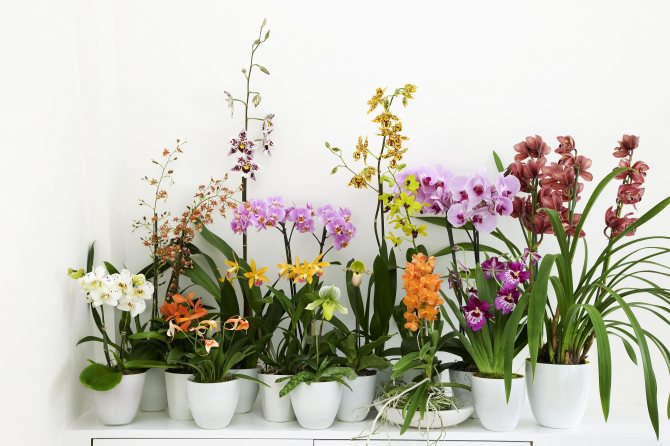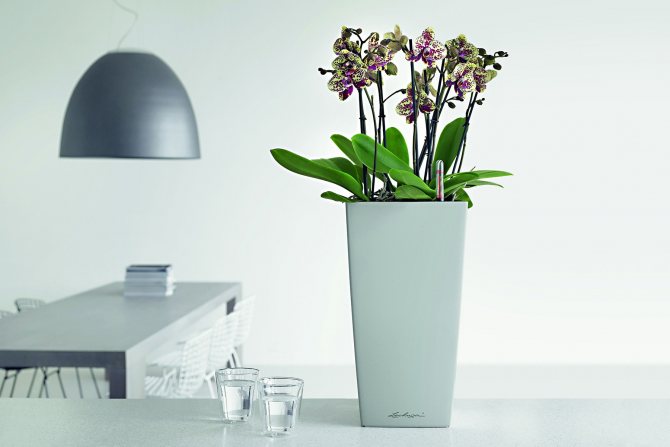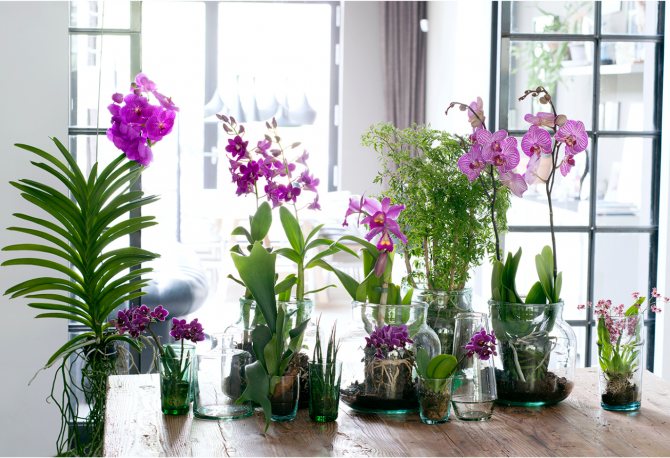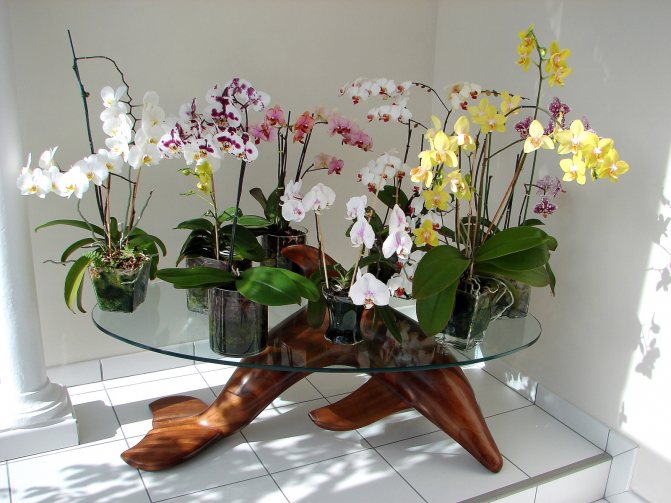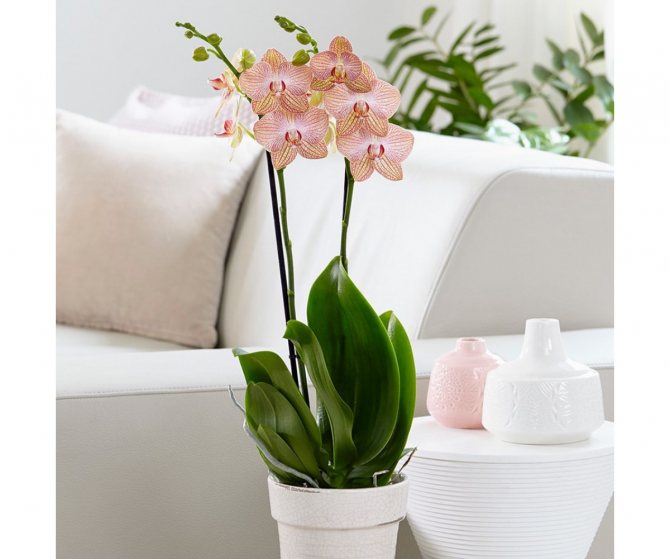Photosynthesis is a necessary process for the normal development, growth and flowering of a plant. Can an orchid be kept in the sun? It is possible and necessary. But sunlight should not be direct, but diffused. In nature, she lives with epiphytes on trees at a height of up to 2 meters. And although in the tropics the sun shines longer and brighter, the crowns create a lacy shadow, protecting the flower from burns.
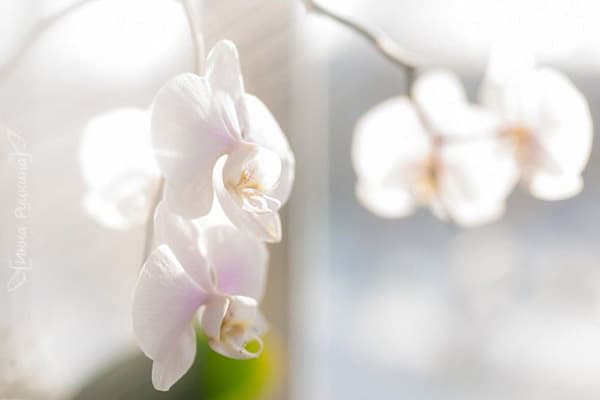
Where to put an orchid at home, depending on the type?
No matter what time of year it is outside the window, a tropical beauty needs appropriate lighting... But, in any case, it is required more than other plants.
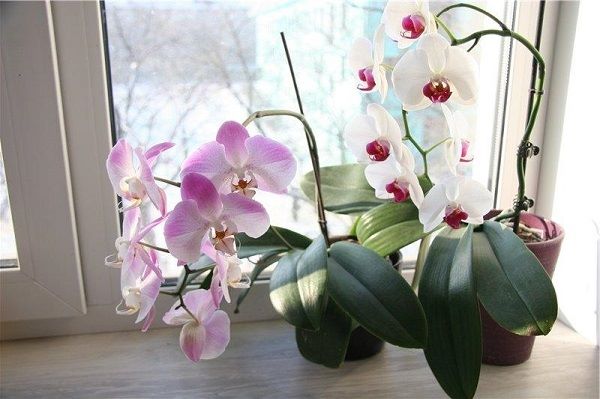

An orchid needs a lot of light to live.
It is important here not only how brightly the sun shines, but also how long it shines, that is daylight hours... In regions where orchids grow in the wild, regardless of the season, daylight hours last 10-12 hours... In our latitudes, this luxury is available only from mid-spring to mid-summer.
And then how? Where to put orchids to get a strong and healthy plant?
Wanda
The most light-loving orchid species... It requires good lighting not only in spring and summer, but at other times too, since its vegetation lasts all year round.
If the light is not enough, she can inhibit its growth or stop it completely. With its rather large size, Wanda will grow even longer leaves in order to get more light.
It should also be borne in mind that Wanda's peduncles appear from the axils of the leaves. And where will they come from if they have not grown? As a result, there is a refusal to bloom.
Cattleya
For successful cultivation and flowering, Cattleya needs bright light, 20,000 - 35,000 Lux all year round... This is especially true of lithophytes growing on rocks covered with moss. Such species able to freely tolerate the direct sunlight of our spring... Moreover, naturalists and hybrids with their participation will not bloom or dry out the peduncle if the brightness of the lighting is less than necessary.
Perhaps this is the only orchid for which the answer to the question "Can I put it in the sun?" will be positive.


Cattleyas are very light-requiring.
Like Vandam, Cattleyam long daylight hours are required... Despite the fact that there are Cattleya "short day" blooming when the daylight becomes 8-10 hours, 5-6 hours of light in autumn and winter is not enough for them. Therefore, for successful growth and flowering, Cattleyas will have to organize additional light source using phytolamps.
Phalaenopsis
Phalaenopsis is more tolerant to lighting, that is, he able to withstand short daylight hours and windows of any orientation... Flowering in this case will not be very abundant and shorter.
It should also be borne in mind that vegetation, that is, the growth of leaves, will occur much slower due to the fact that photosynthesis will not be complete. In this case, Phalaenopsis will begin to eat itself: yellow and dry old leaves.
For successful growth / flowering, this tribe of orchids needs from 8000 to 25000 Lux... Therefore, with a lack of light, Phalaenopsis will have to organize lighting at least for the autumn-winter period.
Dendrobium
For this group of orchids, Dendrobium-Nobile is more light-loving than other Dendrobium species... Moreover, in order for Dendrobium-Nobile to bloom, he needs bright light during the period of cool winter maintenance.


Dendrobium Nobile needs bright light to bloom.
With Dendrobium-Phalaenopsis, you need to experiment with lighting, since the spread across the group in terms of lighting is quite large. It all depends on what natural species participated in the birth of a given specimen.
Paphiopedilum
Paphiopedilums, called slippers among orchidists, can be successfully grown on bright northern windows... They will feel good on the shelves if you hang fluorescent lamps above them.
However, not all shoes fit north windows. If the leaves of these orchids have a uniform green color, then the plant belongs to a more light-loving species. But anyway Paphiopedilums do not like direct sunlight... They grow and bloom best in the shade of other plants.


Paphiopedilums do not tolerate direct sunlight.


Orchids are unusually beautiful and popular flowers, and their presence in the interior is a clear indicator of the refined taste of the owners. First of all, they are known as flowering ornamental plants and favorite greenhouse flowers. Currently, among us there is an incredible number of loyal fans of such an elegant plant. Of course, not all types of orchids are popular, since they are picky enough and, although they can live in our climatic conditions, but not for long. Therefore, the species of the genera Dendrobium, Cattleya and Phalaenopsis won special love.
Often, there is a misconception that the orchid is comfortable exactly in the place where you defined it. And therefore, improper placement can turn out to be a "trap" for such a delicate flower, if you ignore some useful tips for placing a plant in the interior.
To apply orchids in the interior so that they become a beautiful addition to it, our tips will help you.
Where and how can an orchid be placed?
The most beautiful orchid is a very light-loving plant, which means that the duration of its flowering directly depends on the required amount of light. Despite this, she still cannot stand the bright sun, and it would be right to put the beauty at the western or eastern window.
If necessary, the state of health of the orchid can be judged by the intensity of the color of the leaves: if they are very dark, there is clearly not enough light; excessive yellowness and spots, on the contrary, indicate its excess.
In general, an exquisite plant will feel good in the center of a room if it has enough light and fresh air. So, we determine the right place for an orchid in your interior.
In the center of the living room
An orchid can become a highlight of any interior and, from this point of view, there is no better place than the heart of the house - the living room. Place the flower pot in a prominent place: dining table, curly cabinet, chest of drawers or coffee table. Such an elegant plant will serve as the center of the composition of candles and decor items - be sure to set this splendor at eye level.
Tip When shaping the composition, remember that the objects around the orchid should be secondary. Choose dim figurines and small candles or bowls. Thanks to this, attention will be drawn to your pet.


You can successfully decorate the setting of even a festive table with the help of several identical orchids, you just need to put them one after the other.
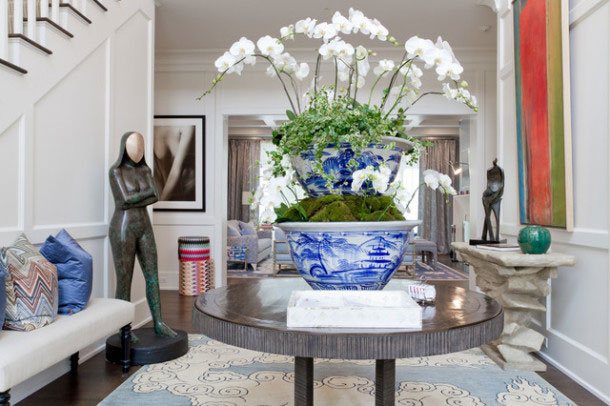

Oasis in the bathroom
If you are the proud owner of a spacious bathroom with natural light streaming from the window, do not miss the opportunity to indulge yourself in a pleasant neighborhood with an orchid.
Place the pots directly on the countertop by the sink, the moisture-loving flower will love it.


But it is possible to bring the atmosphere of a Spa-salon into the usual procedures for body care if one or two exotic flowers decorate the bookcase right next to the bath.


Scent of the bedroom
Recently, it has become very fashionable to put blooming orchids in the bedroom. After all, the fragility and tenderness of this flower so truthfully conveys the mood of this room. You can add beauty and style by arranging orchids on your bedside tables.
Place a flower on each side of the bed, and its charm will greet you with every awakening.
The light from the bedside lamps, although artificial, will still slightly help the growth of the orchid.


It is absolutely natural for women of any age to surround themselves with flowers, therefore, the orchid will serve as a kind of inspiration in creating the desired image. Just place it in front of the mirror or on the ottoman by the dressing table, having previously installed a decorative tray for greater stability.
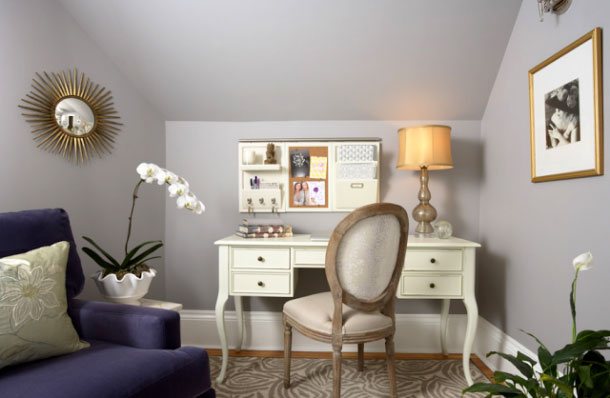

Near the window
You will provide the orchid with the amount of daylight by placing it directly by the window. An exquisite console, stylish chest of drawers or a small coffee table on which a flower is placed will highlight the splendor of the fragrant plant.


Special kitchen
When choosing a kitchen as a room for arranging orchids, you can use surfaces such as a dining table, bar counter, window sill area.
A beautiful effect will be created by flowers gathered in groups of several plants and placed along the windowsill.


How to choose the color of orchids for the interior
Breeders are still working on creating new, even more pretentious varieties and their colors. And it's increasingly difficult for us to find the right shade and combine it with the colors of the walls and shades of furniture upholstery. Experts advise you to trust their professional instincts, and follow these principles:
One tone darker
The color of the flower can coincide with the main shade of the room, but be slightly richer so as not to get lost against its background. If, for example, paint the walls with a shade of lilac, choose a work chair lilac, then the orchid on the table can be bright pink. Combined with white, the cabinet takes on a very stylish look.


Harmony
Combine shades that suit each other: white orchid on a blue, azure, green, red background of the environment. Lilac orchid inflorescences look advantageous against the background of a panel on the wall in sea green.


One whole
Sometimes, such independent orchid colors as white, burgundy and yellow look great, both put together in intricate compositions, and simply as components of the general mood. If the walls and facades of the kitchen are snow-white and the same light "airy" island under the weightless ceiling, then the white orchid in the center will become the logical completion of a single space.


How to choose orchid pots and stands
The orchid family has some peculiarities, since they are epiphytes, which means they have an aerial root system, and in nature they live, clinging to the rough surface of trees. For a comfortable existence at home, they need soil in the form of crushed tree bark and the correct capacity.


Open planters
By planting an orchid in a wide container, you allow the light to penetrate unhindered to the roots, which is important. In addition, a tall flower can be simply placed on the floor, where it will also look great.


Special containers
Orchids can survive a lack of moisture, but they do not tolerate an excess of it. The water drainage system is equipped with special pots for orchids and stands for them, in which moisture does not linger.
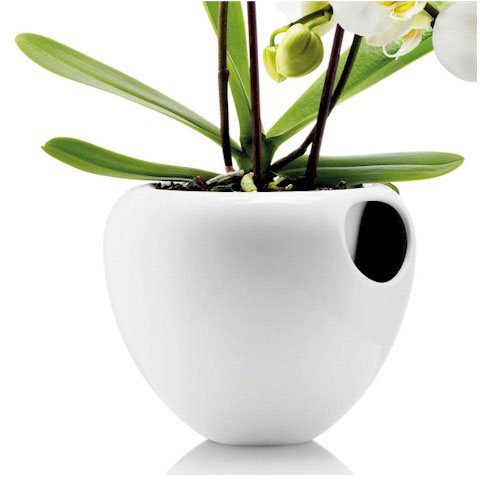

Location selection
The ideal place where to put orchids at home can be considered insulated loggia facing south, equipped with air conditioning and blinds. But for many, these are just dreams, so we will proceed from reality.
Contain orchids during the growing season, it is best on window sills... Southeast, south, southwest or west orientation windows are good for this. Even shoes in the shade of other plants will feel good.
It must be remembered that the spring sun in our latitudes is very aggressive, therefore, orchids must be accustomed to it gradually, regardless of what orientation they are on the window with and how light-loving tropical beauties are.
Let's take a closer look at which window to put the orchid on:
- Southern, southwestern. It is good to grow Wandas, Cattleyas and Dendrobiums-Nobiles on the southern windows, but they need to be shaded in the spring-summer period. These windows are good for keeping orchids in winter: there is no need to shade and there is enough light on them to do without backlighting;
- South-East, West. Suitable for all types of orchids, but only in spring and summer. In winter, Phalaenopsis, Dendrobium-Phalaenopsis, shoes will feel good on them. For the successful cultivation of Wands and Cattleyas, it will be necessary to organize illumination with fluorescent lamps or phytolamps;
- Eastern, northwestern. Shoes and Phalaenopsis will feel good on them. The latter are only in the spring-summer period. In winter / autumn, they practically stop growing, if you do not organize backlighting. For Cattleyas and Wands, these windows are not suitable at all, sunlight is the main driver of their flowering;
- Northern... On the north window, provided that it is at least 3 floors, it is not obstructed by trees or other houses, only shoes with spotted leaves can be grown. For all other types of orchids, such windows are not suitable, if you do not make good lighting with fluorescent lamps using Flora phytolamps.


Orchids on the north window must be highlighted.
There are cities / regions where, even in spring, due to smog, the sun rarely makes its way to the ground. Here you will have to organize additional lighting regardless of which orientation the orchid grows on.
What determines the choice of location?
The most important factor in choosing a site is compliance with the conditions of detention.
A flower needs a lot of light... But you should not put it on the windowsill, where the sun shines from morning to evening, because for an orchid such a factor is destructive. Diffused light or artificially shaded sunny side will be optimal.
The east or west side of the house is ideal. If there is no choice and the plant has to live on the north side, then you should take care of artificial lighting, through which the plant will compensate for the lack of light.
ATTENTION: For different varieties, conditions of detention may vary. Where the light-loving Wanda should stand and will be comfortable in the apartment, Phalaenopsis will have to be hot.
It is also necessary to take into account the air temperature around the flower.... It differs for each variety, but on average it is necessary to maintain about 25-30 degrees in summer and 20-25 degrees in winter. It is also important to remember that the difference between day and night temperature regimes should not exceed 5 degrees.
Air humidity is very important for an orchid. It should be at least 60%, but also not exceed the 90% threshold. If this range cannot be maintained indoors, then it is necessary to recreate it artificially. For example, put expanded clay in a patch under the planter and fill it with water.
Subtleties of content
First, let's figure out if it is possible to rotate orchids on the window, since there is an opinion among beginners that this cannot be done - it will stop growing and blooming. Orchids not only can, but also need to be rotated, swapped.
The lighting from the window is side. An orchid standing motionless will stretch towards the light, that is, it will grow towards the glass, therefore, the trunk will be bent. Cattleya, Dendrobiums after the awakening of the growth point should be set so that the new growth was located on the opposite side from the light source:
- the bush will grow more compact;
- a young shoot will not get burned by the spring sun.
If in winter a window or a window is often opened, then there is no need to keep flowers on such a windowsill - they will freeze.
Modern plastic windows have a ventilation system that allows you not to open the windows in cold weather. BUT a slight decrease in temperature in combination with fresh air will bring more benefits to the orchidthan harm.
Do not grow orchids on the same windowsill and gardenia, oleander, jasmine, pelargonium, hoyi... These plants secrete ethylene gas, affecting orchid flowers not for the better - it fades faster.
Air humidity - an important factor in the growth of orchids. In our apartments, it leaves much to be desired. To increase humidity and reduce the effect of batteries on orchid development, cover them with wet towels.
When the orchid has dissolved all its flowers, you can put it in any other place to admire such beauty without constantly running to the windowsill. Just remember that in a dark stuffy corner, the flowering time of a tropical beauty will be shortened.
Read also Oak diameter depending on age
An orchid removed from a south-facing window will receive:
- 1 meter - 500 lux;
- 2 meters - 240 lux;
- 3 meters - 160 lux.
Feng Shui location
The location of this flower in an apartment has a great impact on a person's life. For example, it is not recommended to place orchids in the bedroom, because this beauty can draw energy from a sleeping person.


In a large living room, in a greenhouse or in a garden, it will be ideal to arrange a beauty without harm to well-being. In feng shui, orchid houses are placed:
- The southeastern location brings success, prosperity and good fortune.
- The southwestern location of the orchid brings a solution to domestic problems, restores old feelings and restores family happiness. The red shades of the buds will be the perfect solution for this arrangement.
- The eastern disposition is able to bring relief from diseases and strengthens health, restores energy and vigor. For the eastern parts of the house, light orchid colors are suitable.
- The North is the direction of business people. Career and work becomes more successful and goes up.
Important! Feng Shui orchid brings joy and prosperity to the house. The main thing is to position it correctly and choose a suitable shade.
In Asian culture, the importance of orchid flowers is very high. According to the lunar calendar, the beauties bloom right before the new year. Following this, spring begins. The orchid symbolizes spring, love, novelty and life.
Read more about whether it is possible to keep an orchid at home and what properties the flower has.
In the astrological sense, orchids contain the sign of the Sun, which indicates their desire for creativity and harmony.
In many cultures, it is believed that the orchid helps to come to terms with the loss of a loved one, with grief and pain. People who have a tendency to depressive states are recommended to have this flower.
In this article, we told you what the orchid means, what message it carries to humanity and how to treat it correctly.
Any business will be arguing several times faster if you approach it in harmony with the world around you. A calm state, a good mood, an adequate perception of reality guarantee success in business, creativity and love. However, our life is full of surprises: stress and depression can interfere with the fulfillment of plans. And it is not always possible to cope with them on your own. But our faithful friends come to the rescue - indoor plants, which support and invigorate at an energetic level.
There is a whole group of indoor flowers that improves mood and gives confidence in their abilities.These include the gardenia, whose white flowers exude a delicate scent reminiscent of jasmine. It helps to cope with depression and fatigue, discouragement and bad mood. Delicate flowers of a room orchid paint the world with bright colors, making it friendlier and brighter. The orchid blooms all year round, so a good mood will always accompany you.
Plants of positiveness are called the bright Kalanchoe Blossfeld, blooming with red, yellow or pink flowers, and the delicate uzambara violet. They bring harmony and order into the house, soothe and tone up. Place these flowers in a row on the windowsill and enjoy the magnificent sight!
Azalea has the same beneficial effect on the nervous system. It relieves nervousness and bad mood, energizes and fun.
The magnificent begonia works as a "house wizard", purifying the energy of the house from bad influences. It is easy and pleasant to be in a room where begonia blooms. Cyclamen protects its owner from grief, reminding him that life is beautiful, and there is strength for further battles and victories.
But not only brightly flowering plants cope with blues and bad moods. Indoor flowers with foliage of unusual shapes and colors also help in an unequal struggle with stress. Representatives of the flora with glossy patterned leaves, for example, common ivy or elasticus, are considered a real source of good energy. Their foliage reminds us of spring and the bright sun, which means that it automatically improves our mood, putting our thoughts in order and setting ourselves up for an optimistic mood. Note also the changeable aglaonema, whose leaves with a white pattern cannot be looked at without a smile, and the pinnate epipremnum is a vine with leaves decorated with golden spots. Strong climbing or climbing plants can instill confidence in their owners and lift their spirits.
To establish the optimal atmosphere in the room, plants with red leaves are also bought. Red is considered a symbol of passion and love. It is bright, catchy, making you think about the definition and establishment of immediate goals and objectives.
It relieves depression and helps to cope with reflection - self-examination and introspection. Poinsettia - "Christmas star" with red leaves is considered the best helper in raising the mood. It reminds of Christmas, winter wonders and magical accomplishments. Cladium two-color acts a little differently, whose green leaves have a red pattern. It is not for nothing that this plant is popularly called "angel wings". It is able to inspire its owner, give him strength and optimism.
Houseplants are home magicians that improve mood and relieve depression. But if a person does not want to change, fencing off from the outside world with a solid shell, then no magic of mother nature will help. Open up to the world, help yourself - and then your life will change for the better!
With the advent of orchids in human life, both light and dark witchcraft powers were attributed to them. For the most part, such views came from ordinary ignorance, but, nevertheless, plunging into the world of the mysterious turned out to be very exciting. Judge for yourself!
Southeast Asia is home to the genus Grammatophyllum, which includes about 12 species of epiphytic and terrestrial plants. Of these, Grammatophyllum speciosum is one of the largest of all existing orchids. Its pseudobulbs can reach three meters in height, and inflorescences of hundreds of flowers can be up to 2 meters wide. Such a plant can weigh a ton in its entirety.
However, we are interested in another representative of this genus - Grammatophyllum scriptum, found in the Philippines, Borneo, Sulawesi Island, New Guinea, Moluccas and Solomon Islands. Each meter inflorescence of this plant has about sixty large yellow-green with reddish-bronze spots on the petals and sepals of dense flowers.The seeds of these flowers were used to make a love potion. In the Moluccas, there has always been a belief that if you mix these seeds in a woman's food, then she will be caught in the web of love forever.
The Chimbu people from the remote mountain communities of Papua New Guinea call a certain species of dendrobium Dendrobium duruagle. In translation, duruagle is a woman of easy virtue. A local legend tells of the ghost of a naked, beautiful, young woman who wanders near water bodies and seduces young people. And if the young man failed to please this beauty, then the next day he wakes up with a bunch of venereal diseases that can be cured only by preparing a medicine from Dendrobium duruagle in a special way.
Beautiful orchids of the genus Ansellia grow in tropical regions of Africa. They were named after John Ansell, who discovered the first specimen on the trunk of a palm tree on the island of Fernando Po, named Bioko in 1841.
One of the Ansellia species, Ansellia africana, known as the leopard orchid because of its yellow and red blooms, is also famous for the fact that, according to numerous European observers, Zulu guys at the bridegroom glued its leaves to their shoulders.
In addition, the African tribes always had a stock of cultivated roots of this plant at the ready. Their healing properties were used in various cases: they were considered a means of stimulating sexual activity; the roots were burned, driving away bad dreams, and the pseudobulb paste, prepared in a special way, acted as a contraceptive and was used by unmarried women, making them sterile for one night. Fortunately, such a barbaric use of orchids is rare and does not cause much harm to human health.
Cordial affairs have always been a favorite topic of occult lovers. Many ancient sources testify to the effectiveness of the use of orchids in exorcising the spirit of the devil. The Chinese treatise Pen Ts`ao Kang Mu (1590), or Questions of Medicine, says that "orchids are widely used to drive out negative forces." The Chinese character for orchid is lan, literally meaning refuge or getting closer to someone or something.
The Greek physician, pharmacologist and botanist Pedanius Dioscorides (40-60 AD) also attributed to orchid tubers the ability to ward off the power of dark forces. In ancient times, witches were believed to use orchis tubers to make a potion of fresh tubers to enhance true love and drive away false passion. The suitability of orchids for exorcism is described in many anthropological sources. There was a story about a broom made of pseudobulbs with leaves of some dendrobium species, which was used to sweep the dwelling immediately after the death of a family member. If this is done on time, then death will not return for the next next of kin. Dendrobiums were also used as a means of defense by the inhabitants of the Solomon Islands: attached to the head, they guaranteed safety when entering an unknown and dangerous territory.
For quite different purposes, the flowers of dendrobiums, resembling dog heads, were used. These flowers were fed to dogs before hunting in order to increase their courage in pursuing victims.
Next, I would like to talk about talismans, amulets and charms made from various parts of orchids and used in various superstitious rites.
For example, in India, where snakes have always been the number one problem, the only sure way to avoid their fatal bite has always been to wear a necklace or belt made from dried Eulophia olrchid pseudobulbs. Vanilla planifolia was originally used in Mexico as an amulet to protect travelers.
In Central Europe, stories are told of treasure seekers who carried orchid tubers in their pockets. So, in Scotland, amulets were made from Orchis mascula tubers.
In Norway, it was believed that if you collect the finger-shaped tubers of Dactylorhiza majalis on the eve of St. John's Day, then at this time they have a special magical power of five lobes - five fingers, instead of the more common four. And if on the same evening the tubers of Dactylorhiza maculata are placed in a secluded place under the threshold of a house, then this house is firmly protected from the evil eye.
These plants, as well as the tubers of some other European orchids, were believed to be effective against all evil spells and, especially, witchcraft on male potency and female infertility.
Interestingly, even in our times, people continue to believe in the magical power of the tubers of these orchids.
One can imagine the extent to which this plant, used in voodoo magic, was mined and destroyed and continues to be destroyed in our time. It is enough to read the recipes of John M. Hansen "The Ancient Book of Formulas".
What magic items are not made from Dactylоrhiza tubers - perfumes that appeared on sale in 1930 and are capable (according to the manufacturer) of attracting love, oils, incense for smoking, bags of dried tubers powder, crystals interspersed with this powder, candles, means for cleaning floors, cosmetics with tubers extract and, of course, very popular by African Americans and other fans of vudism, a bag with a dry tuber of the Lucky Hand Root. This is the root of another terrestrial orchid - dactylorhiza Dactylorhiza (Latin finger-shaped root), called mojo, worn around the neck and has the power, according to the Woodists, to remove curses and serves as a talisman. This root resembles a human hand and, perhaps, for this reason, for a long time, people believed that it possesses incredible magical powers. And the possession or wearing of this root brings good luck in everything, including lotteries and business, as well as protection from all troubles. The root is dried and placed in a special Lucky Mojo pouch, which is worn around the neck as a talisman.
From the early 1920s until the 60s of the twentieth century, this mojo pouch was so popular that it was sung by many of the African American cult blues singers of the time. Muddy Waters (McKinley Morganfield) with his song "I Got My Mojo Working", "Take your handsoff my mojo" - Leola B. "Coot" Grant and "Kid" Welsey Wilson, Blind Willie McTell - "Scarey Day Blues"
So what is a mojo? This is the main attribute of African American Voodoo magic - a flannel bag containing one or more amulets. The word mojo is believed by some to be a derivative of the English word for magic, but it is more likely related to the West African word mojuba, literally meaning prayer in praise and veneration.
Mojo, - “prayer in a bag”, is a witchcraft talisman that can be worn by men, usually around the neck or belt, and by women, around the neck, bra or under a skirt, hidden from prying eyes. Since that time, the popularity of the mojo bag with dry root Dactylorhiza has spread to Europe. And in the United States, this magical Voodoo cult item has become a trademark. There is MOJO brand aromatic oil for impregnating the talisman and lubricating the bodies.
The Chicago Post Company began producing Lucky Brown hair dye, Madame Jones body gloss for the African American market under the Valmor Beauty Products brand, and witchcraft and magic supplies for the African American community. Several Mojo brand labels took this idea even further, including the swastika on the labels.
Here is one recommendation: fill a bowl with rose oil and put your Root of Luck in it, allowing you to absorb the oil. If you are looking for love, carry this root in your pocket in the region of your heart; if you are going on a long journey, put the root in your shoes; if you are in need of money, put the root in your wallet or pocket, etc. It is believed that if you sprinkle banknotes with powder of dried Dactylorhiza root, then you can safely place bets in card games, horse races, wagers, and so on and so on. The win is guaranteed!
In some cases, different peoples used orchid flowers in their religious rituals, which was mentioned more than once in religious writings. Ancient Greece is a classic example. There, orchids were revered as sacred plants.Pausanias wrote on scrolls that garlands were woven from orchid flowers, which were then carried in processions to the holy city of Hermione, to the temple of the goddess of fertility Demeter, where the rites of worship were performed.
China. Confucianism made extensive use of orchid flowers in its religious practices, although Confucianism was more of a moral doctrine and a vision of cosmic vision than a true religion. In areas dominated by Buddhism, even today, ministers carry orchid flowers to decorate statues of the Enlightened One.
Before the Spanish invasion of the Americas, civic and religious leaders adorned their idol statues with the most luxurious flowers of the local orchids. With the arrival of the conquistadors, this tradition was adopted by the Catholic Church. Churches were decorated with orchids during baptism, weddings and funerals. The altars dedicated to Jesus Christ, the Virgin Mary and All the Saints were especially richly decorated. The popular names of some orchids indicate in which religious rites of Catholicism they were used. For example, Epidendrum ibaguense (synonymous with Epidendrum radicans), known as the crucifixion orchid, because of its scarlet flowers, resembling the shape and color of a cross. Local legend tells of a young man who tried to save a crucifix from robbers.
Peristeria elata was called the Holy Spirit (Espiritu Santo) because of the flower column. The column resembles a dove, like the English popular name Pigeon Orchid, and the etymology of its scientific name comes from the Greek peristera - dove. The autumn blooming Oncidium tigrinum is known as the flower of the dead (flor de los muertos) and is used to decorate tombs and altars on All Saints Day.
Other locally named Latin American orchids used in Christian worship: Sobralia dichotoma - A flower of paradise (flor del paradiso) - a plant with fragrant, bright flowers, reaching several meters. Cattleya skinneri, known in Guatemala as the Flower of Saint Sebastian (flor de San Sebastiano), is used to decorate the altar of Saint Sebastian on his holiday.
In Papua New Guinea, adolescents adorn themselves with orchids for "rite of passage" ceremonies marking their entry into the adult world. And some Indian tribes use bundles of cymbidium flowers (Cymbidium) to transport the soul during sleep to a higher kingdom, where they hope to meet face to face with the gods.
You can still continue, but on this I want to end my story about the role of orchids in the magical rituals of the peoples of the world. Although the majority did not find scientific confirmation, time will pass and who knows what will turn out to be reality and what will be fiction.
Natalia Joyce
Care errors
Ignoring orchid lighting requirements fraught with the fact that:
- the flower will stop growing green mass;
- will not bloom or will begin to dry the peduncles;
- will begin to degenerate, that is, young leaves / pseudobulbs will be smaller and smaller every year;
- the plant will weaken, which contributes to the occurrence of various diseases;
- the orchid will become easy prey for pests;
- can quickly rot the roots, since moisture without exposure to sunlight will cease to be processed by the plant.
Is it possible to keep the phalaenopsis orchid at home?
Now the phalaenopsis orchid is becoming quite popular. Is it possible to keep such a flower at home? Almost everyone who has looked after this beauty for their indoor flower garden is interested in this issue.
The negative signs associated with these plants do not at all prohibit breeding them, but only impose some restrictions on this. Do not keep orchids in the bedroom, as it is at night that most plants are active. You also need to minimize the contact of men in the house with orchids. And in no case should they decorate men's rooms and offices with them.
Orchid on the north window
The homeland of the orchid is in the tropics, where the sun is always abundant, so the north window is the worst thing that can be offered to it in our realities. Even in summer, this window will not be sufficiently illuminated, and the plant will not receive the necessary ultraviolet light.
Due to the lack of lighting, the orchid turns pale and stretches out the upper leaves, the plant itself noticeably tilts towards the light source. If the situation is not urgently corrected, the flower will spend all the accumulated forces and stop blooming, and then completely die.
Supplementary lighting of the orchid with a phytolamp will help to solve the situation. For a comfortable existence, this flower needs at least 10-12 hours of "daylight" time. Moreover, the light source should be at a distance of at least 30 cm from the leaves, and the "day" should be continuous. This will be helped by lamps with a timer or the advance inclusion of additional lighting (as soon as twilight begins).
A regular incandescent light bulb will not give the desired effect, and the plant will still suffer from a lack of lighting.
If in your apartment all windows are oriented to the north, it is imperative to install a fluorescent lamp - the orchid cannot cope without it. This also applies to those apartments in which the windows are directed in other directions, but are shaded by tree crowns or other buildings.
Is the orchid an energetic vampire?
Those who were interested in the question of whether it is possible to keep orchids at home, omens and superstitions were brought almost to the conclusion that this flower is a real energy vampire. The plant feeds on the vital energy of those who live with it under the same roof. Even the famous Feng Shui teachings tend to support this theory, although it often takes the side of plants and favors a large number of them in a person's home. However, is it really so?
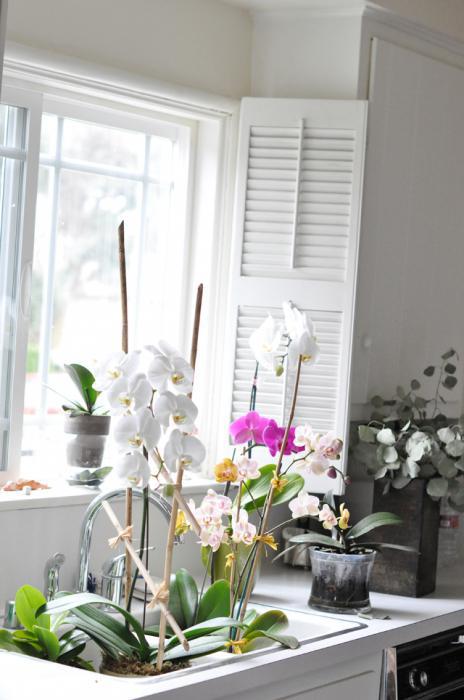

The culprit is the pollen of some varieties of orchids, which not only has a strong sedative effect, but even lulls a person. As a result, the plant began to attribute the magical properties of an energy absorber.
Orchid on the west window
The western window, although not as sad for an orchid as the northern one, is also not ideal. In summer, the sun appears there for several hours and only in the afternoon, and in winter it does not appear at all. Therefore, if a free window in your apartment is oriented to the west, you also cannot do without additional lighting.
Regardless of which window your orchid is on, you must not allow its leaves to come into contact with the glass. Even the slightest cold can destroy the plant, and the leaves adhering to the cold glass will get severe frostbite in a few hours and will soon fall off.
Orchid - the oldest flower
Orchid is a very beautiful flower that is loved by many. The first mention of this plant dates back to the 7th century BC, but some experts who study plants are sure that the orchid has been known to humans for much longer. This is one of the most ancient flowers, which has long been considered a symbol of purity, purity, perfection, divine beauty and harmony. People of the past considered the orchid to be the flower of the chosen ones among people who had some kind of talent - creative or oratory, as well as attractive appearance. It was presented to beloved girls, expressing their respect and admiration for the object of admiration, showing the purity of their thoughts.
As one of the most ancient flowers, there are many signs about the orchid. Some of them are based on the complexities of artificial breeding of this plant, and some are based on the personal experience of our ancestors, which is worth believing.
Orchid on the east window
The east-facing windows are lovely during the warmer months. The plant receives enough light and does not suffer from burns, because the sun is out of sight before it is in full force.
But in winter, these windows are good for orchids only in the first half of the day - then the flower becomes dark again. However, the winters in the middle lane are such that wherever you put the orchid, it will still suffer from a lack of light. So, when purchasing this flower, immediately take a phytolamp for the kit.
The standard layout of apartments involves the placement of heating radiators (batteries) under the windowsills. From this, in the cold season, the air becomes too dry and may not be to the liking of a foreign beauty.If the leaves on the orchid began to dry, and this coincided with the beginning of the heating season, install flat wide containers of water on the windowsill, spray the plant daily or buy a humidifier.
Expert advice
Almost all houseplants are a hotbed of positive emotions. Orchids in the photo are no exception. In accordance with the teachings of Feng Shui, this flower is used in any room. It is only important to adhere to some tips for use.
- According to Chinese beliefs, orchids symbolize harmony, luxury and elegance.
- Given the Chinese belief, this flower is often placed in the office to attract wealth.
- In the living room, this plant will create a harmonious atmosphere.


When choosing an orchid color, it should be borne in mind that:
- The white and pink flowers are designed to create a peaceful environment.
- Bright flowers help to cope with depressive moods.
- For creative people, dark red orchids are suitable. They will allow not to stop the creative process, to create new masterpieces.
- For married couples, the best gift will be red orchids, which fill the space with passion, harmony and mutual trust.


Orchid on the south window
The location of the orchid on the south window is considered the most successful option. It is here that she receives the most light in winter. And even if you keep it without additional lighting, the plant still grows new leaves and flower stalks appear.
However, in the spring and summer, you should be careful. If the orchid is exposed to direct sunlight, it can burn the leaves. Therefore, it is advisable to shade the plant in hot weather. This can be done using partially covered blinds, tulle, light curtains.
A burn in an orchid leaves can be identified by a change in their color (the leaf plate acquires lilac and pinkish tints), and in the most severe cases, by drying out of the edges. And if the pigment "tan" of the leaves passes over time, then the burn spots remain for good, until the plates completely die off.
It should be remembered that such a nuisance often happens with those orchids in which the substrate constantly dries out. It must be kept moist all the time, then the risk of burns is significantly reduced. Bright sun rays are also dangerous because they heat the pot, which leads to the malfunctioning of the roots.
What does it mean by color
Orchids across cultures symbolize harmony, beauty and love at their best. White is a symbol of love and purity.
Such a gift personifies the truthfulness of intentions and thoughts. The variegated shades of this flower speak of passionate feelings for the person to whom it was presented. Shades of pink speak of a strong and genuine attachment of one person to another. Yellow and orange color encourages a person to action, activity and creativity.
On the other hand, for men, this family symbolizes superiority over others, idealism and the desire for leadership. Such a gift characterizes a person as a somewhat cold, idealistic person with a desire to always win.
According to Feng Shui, orchids are flowers with a strong energy field that affects a person and his aspirations, thoughts. Successes and failures, victories and defeats are associated with the presence of these beauties.
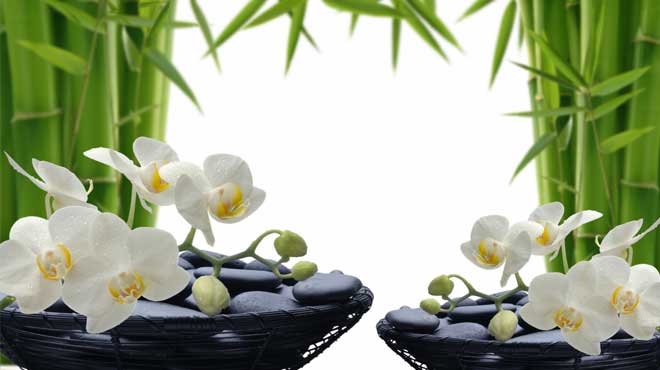

It is important to pay special attention to the purchase and choice of the location of these beautiful pets. The wrong arrangement of the orchid can greatly upset family life.
Any living flower in Feng Shui is a source of positive emotions. Within the home, orchids perfectly complement the interior, in perfect harmony with any of them. Also, this flower symbolizes luxury, aristocracy, wealth, patronage.
Particular attention is paid to the choice of shades and the meaning of the orchid flower in this regard. The language of flowers is closely related to the shades of flowering.White and pink color symbolizes peace and tranquility. The scent of these flowers seems to remove worries from the shoulders and liberate the soul. Bright colors are a source of vitality and energy. Their presence has an antidepressant effect, banishing apathy and indifference.
Rich reds are perfect for creative people to inspire and overcome laziness. The red color exudes around itself vibes of harmony and family happiness, making the interior peaceful, full of joy and stability.
Where to rearrange the orchid in winter
In the period from October to March, when there is little sunlight and on the windowsill, the batteries are "fried" at full capacity, and the glasses are too cold, it is better to rearrange the orchids. The best option would be a rack, a curbstone or a table near the window, so that the flower catches the minimum of sunlight that is, and at the same time does not suffer from drafts and temperature changes. You need to transfer the flower carefully and it is advisable to orient it to the light source with the same side as it was in the previous place.
You can grow an orchid on any window, but in some cases, you will have to put in a little effort to provide it with comfortable lighting.
Where is it forbidden to put a flower?
It is advisable to avoid places near heating appliances. Also contraindicated for this plant are window sills, where a window often opens, hallways directly at the front door (due to drafts). All places where there is no good access to light will not work for an orchid, because even its roots are involved in photosynthesis.
IMPORTANT: Cold air flowing down the window and accumulating on the windowsill will also negatively affect the plant. If the orchid is in such a place, then you should protect it from hypothermia and decay by insulating the window.
What problems can the wrong location lead to?
If the place is chosen incorrectly, the plant will give appropriate signals - dry, become covered with mucus, discard buds, etc. In some cases, it will not be possible to save it. For example, a few minutes of hypothermia will be enough for the orchid to die... But basically the flower can be saved by taking appropriate measures in a timely manner.
When keeping an orchid at home, the plant requires competent and timely care. On our website you will find advice from our experts on how to properly prune, transplant, water, and what is the best way to feed this exotic plant.
Excessive lighting, burns, pigmentation.
On the sunny side, it is difficult to avoid problems due to direct rays.
Let's start in spring, at this time of the year everything awakens from winter sleep. Orchids are no exception, which, having felt a more active sun, begin to slowly come out of their dormant state. It would seem that March is an absolutely safe month, but the sun rises higher and higher above the horizon, and with the first month of spring through the glass on the southern windows it can cause thermal burns to the leaves of Phalaenopsis, unaccustomed to the bright sun after a cloudy winter.
Also, under intense light, plants may "tan" slightly. Pigmentation can be observed in some types of orchids and on young, actively growing tips of the roots, they can have pink, cherry and even purple hues, such staining indicates excessive lighting. The so-called pigmented tan is not terrible for plants, but the burned tissue, unfortunately, will not be restored, the leaves will remain damaged until they die off naturally.
To prevent burns and pigmentation, the windows of the south and southeast orientation at the summer solstice are shaded with a light curtain, with the help of blinds or a Roman shade.
Windows of the other direction do not need shading.
For Phalaenopsis in the summer, there will be enough light on any window, but if you have a summer cottage or you live in a private house, orchids can be placed in a gazebo or under the shade of trees until late autumn, until night temperatures begin to drop below 10C. If this is not possible, then the plants can be hung daily in the morning on an open loggia for sunbathing.
We suggest that you familiarize yourself with: At what temperature are walnuts dried
Avoiding overheating and burns
The same applies to those cases when it is not shaded. Of course, as already mentioned, a flower can stand on a windowsill overlooking any of the cardinal points, but in this case it is necessary to adhere to certain rules. They consist in the fact that with a sufficient amount of light, the plant does not burn.
If the flower stands on a window that faces south, then in the daytime you should lower the roller blinds or curtain the curtains. The penetration of individual rays is allowed, but not the scorching sun. At about 6-7 pm it will be possible to "let" the sun into the room so that the plant can enjoy the sunset rays of the heavenly body.
Sometimes growers notice that pigment spots have appeared on the leaves of the flower. Young roots, which change their color to purple, pink or cherry shades, are not protected from this either. All this testifies to the pigment "tan" that the flower received. As for the root system, then after a while everything will be restored, and the leaves will remain yellowish or brownish.
In this case, you can install the pot on the west window or east.
DIY orchid pot
You can also make a pot for growing orchids yourself. To do this, you need to prepare a plastic base, for example, a food container. Choose the form yourself, but ohThe volume of the structure must match the size of the flower... In the bottom of the container, you need to make a large number of through holes with a knife, screwdriver or drill, it is also advisable to make them in the side walls of a homemade pot. From the inside, in the middle of the container, install a shampoo stopper so that the flower cannot fit snugly to the bottom of the container and breathe better.
One secret to growing a beautiful orchid
SOUTH WINDOWS:
It can be immediately noted that in winter they have one big plus - this is the brightest place in the house (except for the options when you live on the ground floor, and a huge tree grows directly in front of the window, etc.). It can be noted that for about 50% of commercially available plants, sunlight is quite enough here in order not to experience any discomfort at all in the winter, while continuing to grow new leaves, roots and peduncles. The metabolism of some plants slows down, but this does not last very long, that is, the orchid does not have time to weaken (and, as a result, get sick).


However, remember that winter is different in terms of illumination and windows are different, and the territorial location of the city also plays an important role. The behavior is typical for many, but by no means for everyone. If we carry on a conversation in dry numbers, then for (according to measurements of a luximer) for Phalaenopsis you need from 8.000 to 25.000 Lux, on the southern windows on clear sunny winter days about 7.000-12.000 Lux, on cloudy 2.000-3.5000 Lux.
The insidiousness of the southern windows, as a rule, manifests itself in the spring-summer period, when the intensity of sunlight here increases very much, sometimes even reaching 70,000 Lux. However, it would be somewhat incorrect to argue that this would be necessarily detrimental to the plant. Yes. Such a hot sun can cause leaf burns, but it may not, and the answer lies not even in the propensity of some varieties to brighter lighting, a general combination of factors plays a leading role here.As a rule, orchid leaves are more readily burned, the substrate of which at the time of exposure to the bright sun was dry or almost dry, and this happens because moisture begins to actively evaporate from the surface of the leaves under the influence of the bright sun, the signal for the roots to consume water is enhanced, and if water in there is no (or little) substrate, then (devoid of moisture) leaf tissue is destroyed.
In a well-watered substrate, the chances of burning are reduced. Although the probability cannot be excluded 100%, since the direct sun, in addition to everything else, heats the pots, and the possibilities of the root system are not limitless. It works well only at certain temperatures, and when overheated, it either turns off or collapses (in fairness, it should be noted that visually this can resemble both drying and decay).
If the leaves of your orchid begin to change their color to yellow-green, purple, a lighter (and sometimes depressed) rim begins to appear on them, then it may be more rational to rearrange the plant during the summer heat behind a tulle curtain on a table or shelf near the window. However, it will not be superfluous to first observe how direct sunlight moves around the room in order to reduce overheating of the leaves to a minimum.
WESTERN WINDOWS
A more gentle option for summer time, since the direct sun comes in here only after 2-3 o'clock in the afternoon (maximum for 4 hours, for comparison in the south the direct sun shines for 6-8 hours in a row), but it is also a darker alternative in winter. Moving on to the numbers, it can be noted that in summer luximer fixes here from 20,000 to 40,000 lux, and in winter 5,000-8,000 lux, which in turn can be very favorable for many varieties of orchids, without causing significant stops in growth and long interruptions in flowering.
EASTERN WINDOWS
In a nutshell, we can say that good for summer but dark for winter. As a rule, most of the varieties currently available between late October and mid-March do not show significant signs of life here, quietly “snoring” in the corner. In the digital equivalent for winter it is 2,000-4,000 Lux, for summer up to 20,000 Lux in the morning hours, approximately from 8 am to 12 noon (direct rays move from one corner of the window sill to another).
NORTH WINDOWS
With regard to exclusively only natural lighting from windows, this is the most unfortunate option, since it can be roughly determined that dark in summer and winter. In digital terms, the maximum for the summer is 7.500 Lux, and even then not on every window, in winter it is 300-500 Lux. Only a small proportion of varieties are really adaptable and do not show significant developmental disruptions.
You can only understand how bad or good your plant is on a particular window by comparison. Many orchid lovers, who had only northern or eastern windows at their disposal for a long time, after moving to a new apartment with western or southern windows are often very surprised when their pet suddenly begins to give 2-3 peduncles at a time and not one bloom (as it was earlier), but two or more times a year.
Among people who are far from the process of sowing or cloning orchids, there is often a myth about hormonal "feeding" of plants before selling them so that they grow faster and begin to bloom. Supposedly, such plants, getting into our homes, quickly wither away and then do not bloom for years. As practice has shown, unfortunately this myth is passed by word of mouth not only from beginner to beginner, but also from more experienced amateurs. The stuntedness and refusal of the flowering of the plant has nothing to do with hormones (which, for the sake of justice, are given to plants once in their life in infancy, i.e. 5-6 years before the intended sale), this is just a consequence of INSUFFICIENT LIGHTING.
In the greenhouse where your orchid was grown, it was kept all year round in conditions as close to natural as possible, i.e.stable bright lighting both in winter and summer, you can easily repeat this one at home by placing your Phalaenopsis from the end of September to April under special (plant-oriented) phytolamps, the spectrum of which is maximally favorable for photosynthesis, i.e. contains certain blue and red waves. However, you should not immediately rush headlong to the store for lamps. First, try to find a good place for the flower on the windowsill, watch its growth, and only then (if it doesn't work out) turn the apartment upside down and install lamps on the windows.
Phalaenopsis features
The orchid itself is a very finicky flower. But there are species that do not require special growing conditions. Phalaenopsis is easy to grow even for a person far from floriculture. Phalaenopsis mini requires the same approach to grooming at home.


Phalaenopsis orchid
The flowering of the orchid is long and very beautiful. The buds and flower are similar to artificial ones due to excessive bright colors and regular shape. The color gamut is very wide, from whites to blacks and blues, which are a rare find. Evidence of this is a photo of orchids.
The choice of phalaenopsis is a very important point. After all, you need to distinguish between the healthy state of phalaenopsis and acquire a young, strong plant.
The orchid should have deep green leaves without damage, color spots, scratches and dry shoots. They are tight and elastic to the touch. The flower should sit firmly in the pot. This is the key to healthy roots. No steams that have crawled out of the ground, no wobbling of a flower with the risk of falling out of it.
Pot and soil for phalaenopsis
Choose baskets or baskets in a wicker style made of twigs, bark, twigs, bamboo orchid sticks. They are perfect for growing plants indoors. For filling, choose a mixture of finely chopped bark and moss. This is the ideal substrate for young phelanopsis. The land is not needed, because in the wild it grows on trees. Provide a breathable potting medium for the orchid.


Phalaenopsis pot
A plastic phalaenopsis pot is also available, but not deep. Make large circular holes for moisture in the bottom. Look for a pot without harmful chemicals in the composition.
For a phalaenopsis plant, a transplant is always painful. Especially if the roots have been damaged by thorough cleaning from the old filler.
Therefore, the manipulation of the plant is done as a last resort: when the capacity is completely small for further growth.
- Carefully select the roots with a large area of the substance from the pot around the roots.
- Make the separation as far as possible so that the thin phalaenopsis roots are not damaged.
- After freeing the rhizomes, place the plant in a large container, but do not bury it deeply. Let a small mound stick out. Over time, it will settle and a comfortable position of the orchid will form.
Change the pot of substrate every few years. The fact is that over time, the useful components are washed out, the filler falls off and lays down in a tight, airtight layer. Such an atmosphere is not suitable for phalaenopsis life.
Answers on questions
Question number 1. What if an orchid growing on a windowsill got sunburn?
It is not worth cutting out the spots formed as a result of the burn, and even more so to remove the burnt leaves. It must be borne in mind that the negative consequences of excessive insolation are the more serious, the drier the substrate in which the orchid grows. Therefore, the first step is to moisten the soil. It is advisable to soak the container with the plant for 1-2 hours in a solution of "Zircon" (5 drops of the drug per 1 liter of water).
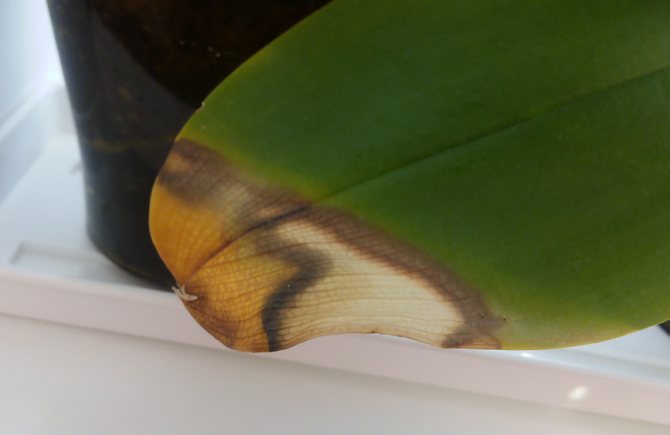

Sunburn spots are not restored, but it is not worth removing the leaf plate for this reason.
Signs and superstitions about a positive orchid
As mentioned above, he has nothing against breeding, but subject to the above precautions.Then they will not have any negative meaning and will serve as a real talisman for any woman, help develop talents and engage in creativity. Only in order for the plant to treat you well, it should be properly looked after and prevented from diseases and wilting of the orchid.
An orchid can prolong and even restore a woman's youth, health and good mood. She gives attractiveness and enhances all feminine qualities and character traits. With the help of this home flower, you can expel negativity from the house and attract positive energy into it. At the same time, pay attention to the color, because specimens of different colors have different effects.
This plant can also be your protector. If a guest comes to you who has planned evil against you, the orchid will surely drive him away, causing poor health and a desire to urgently leave your apartment. Secret and obvious enemies who had to deal with the orchid protecting their mistress have headaches, various anxiety states and other disorders.
Flowering period
The orchid will please the eye for proper care and water procedures for several months or more (even six months). Quite a long time for a room dweller.
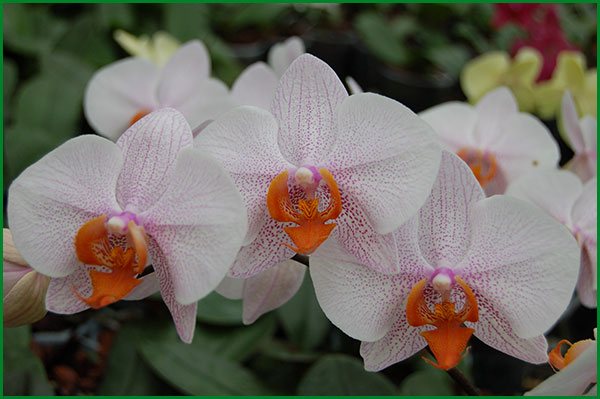

Orchid bloom
During this period, you can occasionally feed the rhizomes, although this is not a mandatory approach. It is more relevant after flowering.
Advice. If you replace watering by spraying the substrate and put the plant in a dark place, then it will bloom faster. Of course, this is not done at the moment when you want to. And at a biologically suitable time.
Where do orchids grow?
Substrate. It can be prepared independently from chopped pine bark, pre-boiled and dried, pieces of charcoal and sphagnum moss in a ratio of 5: 1: 1. For large specimens, take pieces of bark 2-3 cm long, for small ones - 1-1.5 cm.
Yes, I prepare the substrate myself - the main reason, of course, savings: a half-liter bag of bark in a store costs almost 40 rubles. In the forest, they give it free. Be sure to take bark from fallen trees or old stumps. Firstly, there it is already half-decomposed, just the kind that suits the Orchids. Secondly, if you rip off the bark from living trees, you can destroy the tree.
Coal is also "home-made" - the parents have a bathhouse in the garden, coal is abundant.
I know that some orchid collectors collect moss themselves, I am not yet ripe - I buy ready-made (clean, green).
Dishes and drainage. Phalaenopsis can be planted in a pot, mesh planter or basket. Be sure to fill the bottom with a high drainage layer of pebbles, broken shards, pieces of bark and charcoal.
Since the roots of the halyards are involved in photosynthesis, it is preferable to take a transparent pot. Unfortunately, nobody brings transparent pots to the shops of Yekaterinburg, you have to do it yourself. All my relatives and friends give me transparent plastic buckets (for ice cream, seaweed and other products). In these buckets, for better ventilation, I make a lot of holes using a regular soldering iron.
Growing at home
Conditions of detention
Window sill
- for Phalaenopsis, it is better to choose western, northeastern, eastern with shading or in the second row, northern. On the south side, it is necessary to shade or put it next to the window on a table. When direct sunlight hits the plant, the leaves can get burned (light brown, dark brown spots, depressions).
Temperatures
- flowering lasts longer in light shade and at a temperature of + 18-25 ° С. Typical temperature range: + 18–25 ° С. A short-term increase in temperature in warm weather up to 35 ° C is allowed. At high temperatures for a long time, Phalaenopsis can shed flowers, and leaves lose turgor. In the cold season, a short-term drop to + 12 ° C is permissible. The usual temperature is + 15-25 ° С.
Humidity
- normal humidity 30–40%.Excessive humidity without ventilation can lead to stains on Phalaenopsis leaves and root rot. Permanently low humidity 20 - 25% can lead to loss of leaf turgor, and the loss of flowers. To increase humidity, you can place the plant on a tray of water.
Watering Phalaenopsis
Water after the substrate is completely dry, but do not allow the plant to be in a dry state for a long time. In a transparent pot, the need for watering can be determined by the lack of moisture on the walls of the pot, as well as by the roots, which become light. The roots of Phalaenopsis, saturated with moisture, are bright green. In an opaque plastic pot, as well as in a clay pot, you can rake the substrate with your finger and determine if the substrate is wet or not. No need to rely on drying the substrate from above. At the bottom of the pot, it may be quite damp. It can be determined by weight - the pot is light if the substrate is dry. Water is usually watered over the substrate or by immersion in a container of water. It is not recommended to water over the leaves. If the water is not of good quality, stains may appear on the leaves. Once a month, you need to clean the orchid - arrange watering under the shower or tap. After watering, it is advisable to wipe the leaves dry. Watering the substrate under the tap helps to cleanse it. With excessive watering, and especially at low temperatures, dark brown spots may appear on the leaves. In addition, the roots can rot, as well as the growing point. In the event of the death of the roots, the leaves lose their turgor, and the plant will recover for a long time. In case of decay of the growing point, loss of leaves, a lateral shoot may appear.
Fertilizer
At home on the windowsill, it is recommended to feed the orchid through watering during the growth period. Fertilizer Kemira Lux is perfect. Overfed plants often have leaves that crack.
Bloom
To initiate flowering, Phalaenopsis can be placed in a cooler place and watering can be reduced, spraying only the substrate and watering occasionally. Flowering at optimal temperatures can last up to 6 months. To prolong flowering when watering, you can spray the peduncle with warm water. If it is warm, diffused light and humid, the peduncle continues to grow, forming new buds. After the end of flowering, the orchid peduncle does not need to be cut off. The plant decides for itself whether it will bloom from the same peduncle or not. You can cut off the peduncle only when it is completely dry. Currently, in modern hybrid Phalaenopsis, the peduncle has a tendency to branch. Therefore, the same peduncle can grow into a small tree. Masterclass "Pollination Phalaenopsis":
Part I, Part II.
Root care
Phalaenopsis aerial roots located on top of the substrate do not need to be pushed into the pot. If part of the root dies off, the dry brownish part must be cut off to a healthy, green one. The dying off of old roots is a natural process. As the plant grows, it releases new roots. With the loss of roots, the leaves usually lose turgor, become flabby, and hang down.
Leaf care
Leaves must be wiped and kept clean, as this is the most important part of monopodial plants. In domestic culture, Phalaenopsis often retains a large number of leaves and can reach 50-70cm in length, hanging down. The roots appear between the leaves of the plant. When the old lower leaves die off and the trunk is exposed, then it is necessary to cut off this part to healthy new lower leaves and roots. The plant calmly undergoes this operation and continues to grow further.
Orchid transplant
If you bought a healthy flowering plant, then there is no need to replant it. To make sure that there are no pests in the pot, you can lower the pot with the plant in a bowl of warm water for 30-40 minutes, covering the surface of the pot with a net so that pieces of bark do not float away. They are usually transplanted if the substrate has already become unusable once every two or three years.Over time, the substrate cakes, becomes brittle, brittle, somehow black and smells sour. So the time for transplanting comes, as a rule, after flowering. The peculiarity of the growth of Phalaenopsis is that it belongs to monopodial plants, the growth point is at the top, and the plant simply lengthens due to growth. Almost all new and healthy roots are between the leaves and are airy. What remains in the pot is an old stem with dried roots. But this happens in 5 - 7 years. And while Phalaenopsis is growing, a new clean and fresh substrate is needed. Masterclass "Transplant Phalaenopsis":
Part I, Part II.
Substrate
Main component substrate
for Phalaenopsis, the bark is small and medium fractions. If the humidity in your apartment is low, which happens in the autumn-winter period, when the heating is turned on, then you need to add sphagnum moss. Pieces of bark of the middle fraction are usually placed on the bottom of the pot, and in the middle and on top of the fine fraction. Dry bark quickly passes water, therefore, before transplanting, it is necessary to rinse the bark and soak for 2 days so that it is saturated with moisture. Then drain this water and rinse in clean water. Add chopped moss, stir and transplant the plant.
Capacity
Phalaenopsis is usually transplanted into transparent pots, although opaque plastic, ceramic can also be used. Some hobbyists grow on blocks, but this requires increased attention and care.
Marina Bugrova, "Treatment and nursing of orchids": part 1, part 2 Andrey Romanko, "Lighting of orchids": part 1, part 2
We go to buy an orchid - how to choose the right orchid? Orchid Care And here is your first orchid in your home! What needs to be done, how to provide care so that the orchid develops safely and blooms profusely? N. Kurdyapin "Before you start an orchid"
Video lectures: Marina Novikova, "Fertilizers for orchids" part 1, part 2 Marina Bugrova, "Treatment and nursing of orchids": part 1, part 2 Elizaveta Nunikyan, "Culture of Masdevally": part 1, part 2 Elizaveta Novikova, "Masdewally ... General information "Elizaveta Novikova," How to water orchids "Elizaveta Novikova," Miniature orchids. Care and Cultivation "Andrey Romanko:" Odontoglossums - Mountain Kings "Andrey Romanko," Orchid Lighting ": Part 1, Part 2 Vladimir Markin:" Pollination of Orchids "
Landing
The most important planting rule is to handle fragile roots with care. Cut off dead roots by sprinkling the slices with ground sulfur or charcoal powder. Remove dried petioles from old leaves with tweezers. Pour the substrate so that 3 cm remain free from its surface to the edge of the pot - this will allow you to add fresh substrate as the lower leaves die off and new roots form.
Healthy phalaenopsis roots are green (or silvery - if they are dry), inside such a root is dense, hard. Roots are damaged, rotten colors are either brown or off-white. If you grasp the tip with your fingers and gently pull, then the outer shell is removed and a thin core thread remains.
You can also use ground cinnamon as an antiseptic (for powdering the slices), only without sugar.
Coating and watering
Cover the surface of the substrate with a layer of moss and do not water for 2 weeks after planting, but only spray the lower surface of the leaves.
In general, I usually only spray moss. For 2 weeks after transplanting, the plant has time to recover and heal broken roots. If there was rot somewhere, it dries up. In general, plants need these two weeks.
Unfortunately, it also happens that you dried the phalaenopsis, danced around him with a tambourine, but he died anyway.
What problems can the wrong choice lead to?
With the wrong choice of place, the plant will begin to give “signals”. An orchid can dry out, shed its buds, become covered in mucus, and eventually die.In most cases, the flower can be saved. But there is an exception - hypothermia. For the death of an orchid, literally a few minutes of hypothermia is enough.
When growing an orchid at home, many questions arise, so we recommend that you familiarize yourself with our other materials on how to properly water, transplant, how to feed a flower, and also in what cases pruning is used.
Despite the fact that the orchid is considered an extremely capricious plant, it, in fact, is not more capricious than others. Her capriciousness is due to the fact that she lives in slightly different conditions than in those where she is bred. But all the nerves and efforts spent on the orchid then pay off in full.
If you find an error, please select a piece of text and press Ctrl + Enter.




